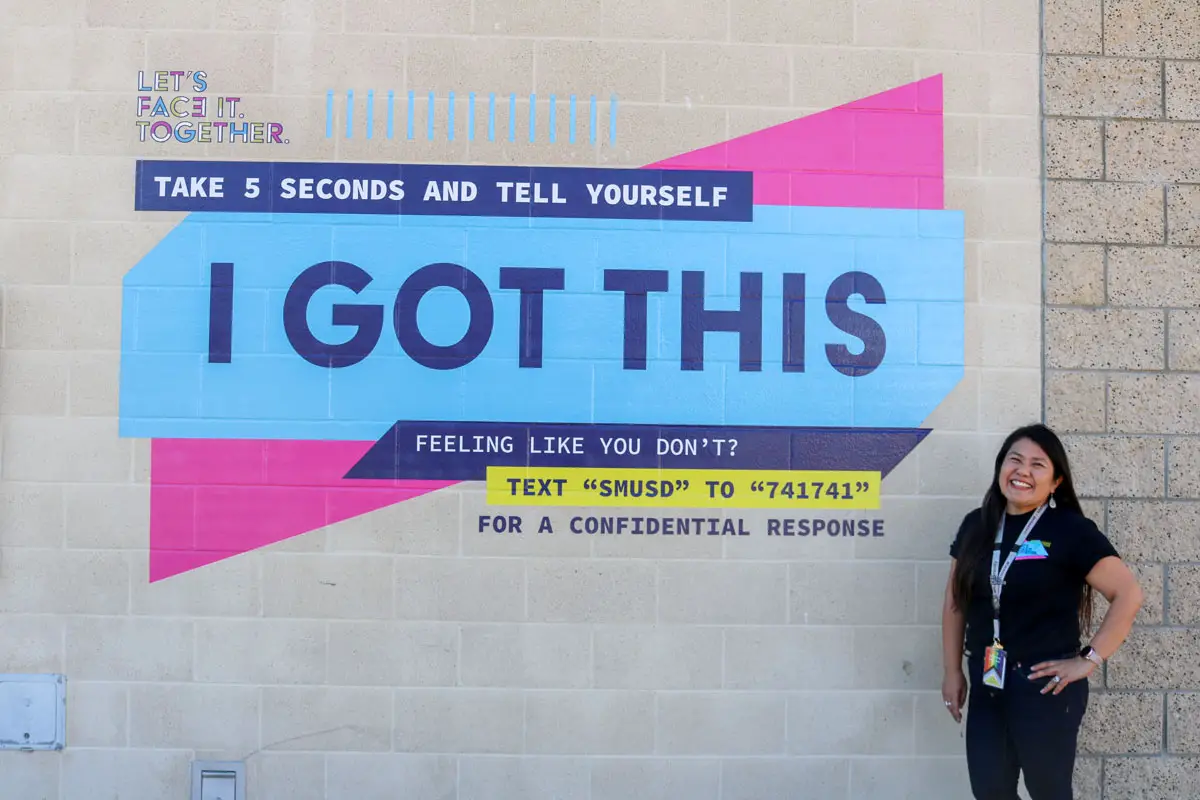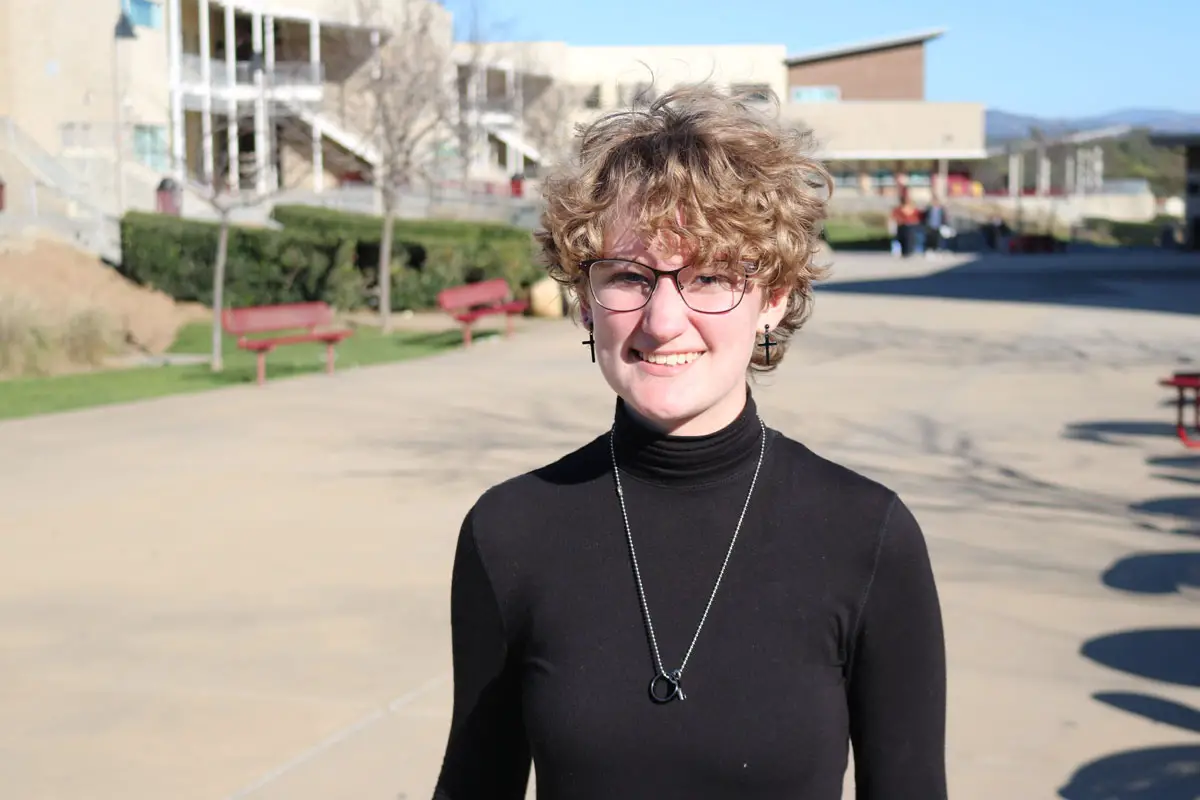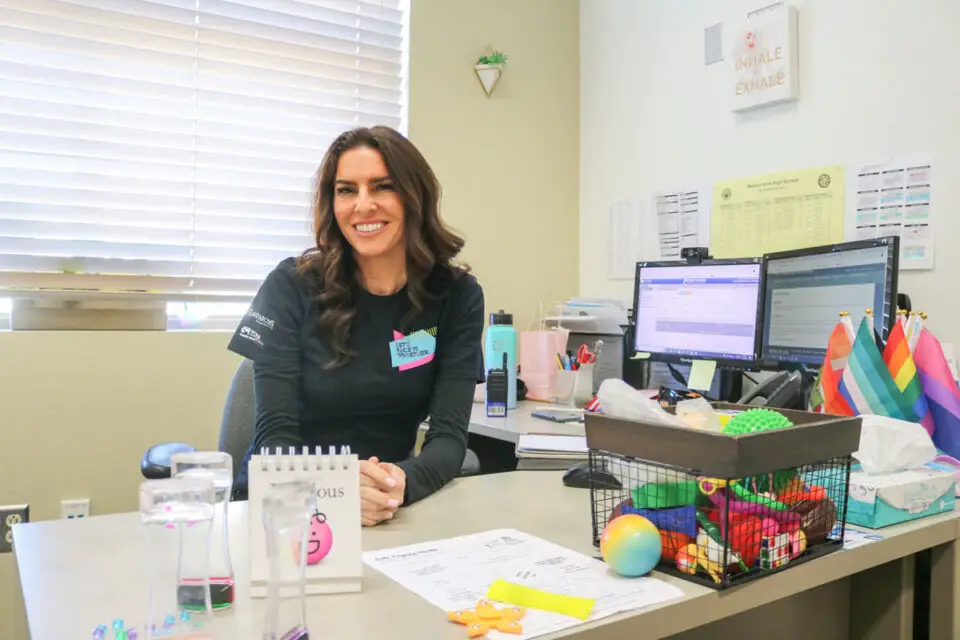SAN MARCOS — Going into her senior year, Mission Hills High School student Sierra Stanley was involved in various school activities, including leadership of clubs.
Beneath the surface, however, she was experiencing stress levels so high she was considering transferring, and she wanted to talk with somebody about the heaviness weighing on her mind.
She took a chance at the school’s counseling office and found a close confidant in school social worker Bina Gold, with whom she could share and process her feelings and discuss tips and tricks to help manage her stress. Now, Stanley frequents Gold’s office when she feels overwhelmed, and when they cannot meet, she glances at the list of tips and tricks she has written down over the months.
She wishes more of her peers could look past mental health stigma and obtain the same support.
“After seeing her, I feel like I can face the day, and I didn’t feel like that when I came in. Just hearing her kind words helps me,” Stanley said. “I think many people don’t really understand why I go — they make fun of me for going. I wish people would understand how much she helps me and that they can get the same help.”

San Marcos Unified School District officials have recognized three facts related to mental health: that countless elementary, middle and high school students are experiencing severe impacts from stresses both in and outside of school, that these impacts grew following COVID-19 shutdowns and that they need more resources to meet the need.
In the wake of the pandemic, district leaders saw a troubling trend among students that was visible across the country — the suicidal ideation rate among middle and high schoolers had doubled; among elementary students, it had tripled.
“Last year, out of the many years I’ve been a school social worker, was the hardest year of my career,” Gold said. “Everyone was hurting; everyone was somehow impacted, whether it’s mental health, grief and loss, or navigating this new world. We had not just students coming through, but staff coming through.”
District staff began to meet during the 2021-22 school year to discuss how they could leverage their available resources, and “it was almost by fate that, at the same time, the city was looking to support these endeavors,” said Christi Frias, the district’s director of student services.
Thanks to a $1.25 million grant from the city of San Marcos and some strategic budgeting, the district was able to allocate funds that will allow students to access a greater variety of mental health resources on the school level.
The monies from the city, sourced from federal COVID-19 American Rescue Plan Act funds, are specifically geared toward implementing a tiered system of mental health initiatives. Along with providing more resources, officials hope to help remove the stigma associated with mental health.
“Because of how taboo mental health is, people say, ‘Oh yeah, I do struggle with mental health, but that’s dumb,’” Mission Hills sophomore Grey Gabbard said. “I’ve seen a lot of friends of mine, myself included, where going to class every day is so overwhelming.”

The first tier is focused on the wider student body, with an on-campus campaign, Let’s Face It Together, as well as student surveys and increased services for LGBTQIA+ students.
Tier 2 is for students needing additional support, offering other school-based mental health staff, a crisis text line for all students and staff that connects them to a crisis counselor, and free access to Care Solace, a mental health services navigation tool.
Care Solace handles referrals to different mental health services and does the work of identifying available clinicians and programs for those in need of mental health care — time-consuming tasks that existing school staff can’t always handle.
“When you’re at capacity, you don’t have the ability to connect families to that process. For our families, that’s been a life changer,” said Lezya Weglarz, the district’s coordinator of multi-tiered systems of support, or MTSS.
Tier 3, focused on the highest-need students who are actively in a mental health crisis, involves the formation of three wellness units. These two-person teams comprise a school-based mental health professional and a family community engagement liaison who can visit a student’s home to support them and their families.
Deputy Superintendent of Student Services Tiffany Campbell said the district recognized that the mental health supports they already provided were insufficient and communicated to the city that they would like to use funds to fill those gaps.
“This is the first thing that we started to talk to the city about — ‘If we could have a dream, what would this dream be?’” Campbell told the district board in December. “It would be to have these teams who go out to families in their homes when their students are in crisis and to help them navigate the crisis, from what’s happening in school to helping them find community … as well as to help introduce students back to school when they are ready to come back.”
The three wellness units officially launched in January, each assigned to one high school, one middle school and four elementary schools, providing consistency in services across the district.
At Mission Hills High School, officials have gone one step further in supporting student mental health. A space that was formerly the Future Center was transformed this year into a student wellness center called the Zen Den, a quiet and calming room for students to decompress and connect with counselors.
Students entering the Zen Den are met with an atmosphere of essential oils, calming ocean sounds and comfortable couches, with yoga mats, adult coloring books, weighted blankets, headphones and fidget tools available for use.
All students can take a 15-minute break from class to go to the Zen Den to “reset” in whatever way they need.
“Some students don’t need to talk to us, they can just come here and do their coping strategies,” said Mission Hills counselor Susan Martinez Alejandre. “I know there are students taking fewer mental health days now because they know they can leave class and come here if needed.”
Gabbard said they had significantly benefited from visiting the school’s counselors over the past two years and appreciate how the school has fostered a space like the wellness center for students.
“I watched this little center turn into what it is now, a space to decompress. I’ve felt so welcomed here, and I’m so thankful to have that,” Gabbard said.



